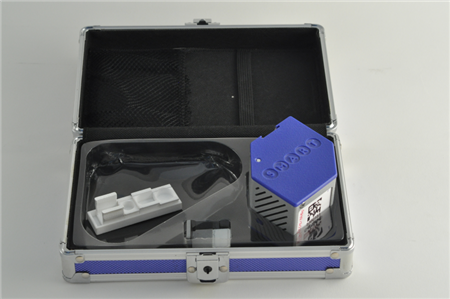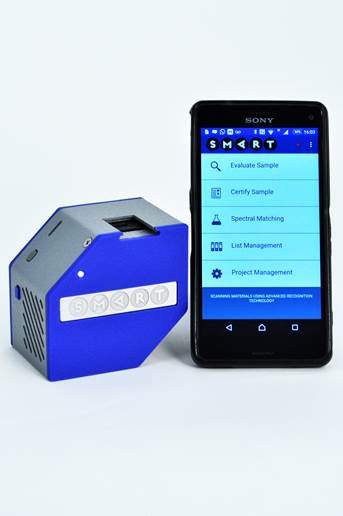SSZTAL9 november 2016 DLP2010NIR

Recent advances in cloud computing and the Internet of Things (IoT) have opened up organizations to the benefits of “Big Data,” allowing them to analyze a continuous flow of information.
But how could these advancements impact the field of spectroscopy? Innovative companies like Optionline, where I serve as chief executive officer, are helping to lead the way. We are connecting near-infrared (NIR) spectroscopy to the IoT through our SMART technology (pictured below) that performs data analysis on various substances. This helps those in the pharmaceutical industry,for example, ensure quality control by rapidly identifying the chemical makeup of substances.
Today’s NIR technology analyzes and distinguishes features within data sets instead of looking deep into the chemical analysis. This means a simple scan reading in the NIR spectroscopy range involves huge inflows of data points. Usually the signals are decomposed into hundreds of predictor variables, which are fed through complex algorithms to predict classes or quantify specific content. NIR spectroscopy gives people access to materials intelligence by converting chemical information into numbers – which in turn can be easily transformed, transported and translated.
It’s easier said than done, of course. The NIR spectrum is a consequence of molecular vibrations in the sample, therefore influencing the light radiation that is reflected away from the sample.
Usually the signal responses are not specific to a particular material, rather, each group´s responses adds up, thus providing low specificity of a spectral reading. Signals are also heavily auto-correlated, making the signal decomposition a difficult task. A whole new science called chemometrics has emerged and is very focused on creating analytical tools for dealing with these complex data.

While an identification of a chemical formulation using NIR light is perhaps many years away, the convenience, mobility and affordability of presently available NIR technology can still address today´s problems. We can assess what could likely be present in a sample, or perhaps what is unlikely to be there using spectral matching techniques. This is closer to screening samples versus a chemically analysis, which essentially means intelligence gathering. In other words, we are not trying to answer what is in there, but what could be in the sample. Being able to reduce the problem to a few possible items may be an important step for defining the best response.
An Optionline solution, which is based on the flexible TI DLP® NIRscan™ Nano evaluation module (EVM) and uses the DLP2010NIR chipset, takes NIR spectroscopy out of the lab and into the field by reducing the system size and making it more affordable compared to previous NIR spectroscopy solutions. In fact, thanks to DLP technology, portable material analysis is now a real possibility for use beyond traditional analytical lab environments and into places like farms and warehouses.
Optionline´s approach has taken two separate paths in that direction. One is to build a reliable database of spectral signatures for thousands of relevant substances, mainly involving food, pharmaceutical and hazardous materials.
We are also working on ways to provide online real time analysis for fast turnaround responses. That means simplifying the readings and integrating a machine´s artificial intelligence to human intelligence.
Usually a list of dozens of substances can be screened in just a few seconds if we know what to look for and compare them the same way. While a machine can reduce the scope from dozens of candidates to just a few, we still require human intelligence to take it from there.
“Big data”, the IoT, NIR new technologies, when all are integrated, have more in common with sniffer dogs, among the oldest screening measures still employed. Being old or new does not matter. Usefulness is king.
Learn more about spectroscopy here: